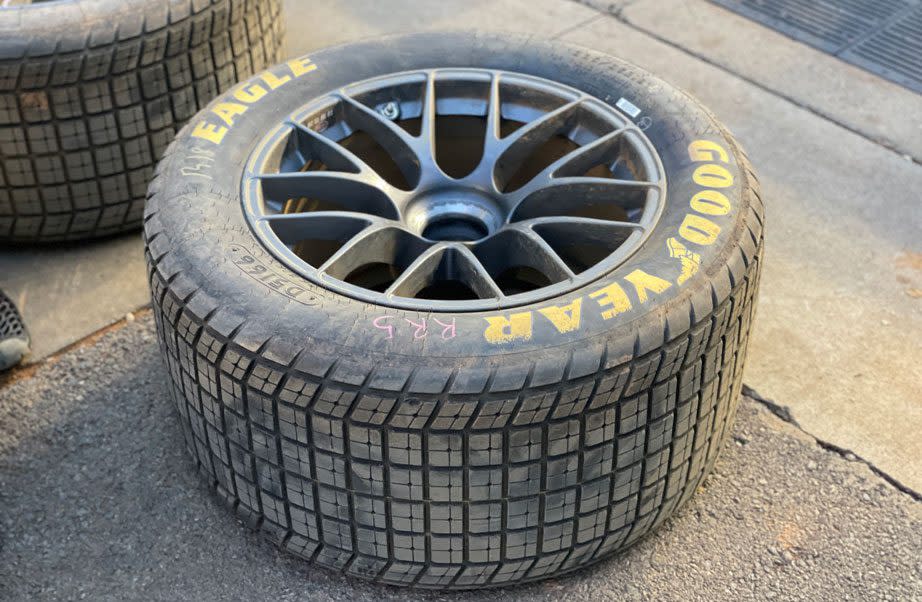Next Gen analysis: Bristol Dirt Race came down to car control, driver skill
Editor’s note: Bozi Tatarevic is a professional racing mechanic and pit crew member. He will provide technical analysis for NASCAR.com throughout the 2022 season.
Overcast conditions and sprinkles during the day resulted in a damp surface to start Sunday’s Bristol Dirt Race, but we ultimately saw what the Next Gen car could do for 250 laps on dirt.
Yes, early conditions led to some mud being flung on the cars, but they eventually settled in and became very racey. The independent rear suspension and wider tires appeared to make these cars much more compatible in the dirt, and seeing them slide into the corners was reminiscent of seeing rally cars pushed to their limits on dirt.
RELATED: Photos from Bristol Dirt Race
While the cars got off to a great start from a handling standpoint, the soft top layer of the dirt surface meant that the grilles were getting slung with mud in those early laps, eventually resulting in a caution for teams to clear grilles and windshields. This initial cleaning was enough to clear off the bulk of the dirt that had ended up stuck to the fronts of many cars, and another similar caution period for cleaning was not required. While this was probably a good idea to allow as many cars as possible to continue to race, it would have been interesting to see the dirt and debris element as part of the strategy since some teams had spent time engineering solutions that allowed them to get cool air to their radiators and engine even with dirt hitting the front of their cars.
Once the surface settled in, close competition came out and a variety of tire strategies were employed, with some drivers deciding to stay out during stage breaks to gain track position. This was partly due to the new tire design working so well with the dirt surface, and it did not degrade over long periods of time. The wider surface of the tires along with the modifications to the tread blocks for cooling did its job to allow teams not to have to worry if they would overheat or damage the right rear tire by making a setup where a driver could get the most out of the car.

Elements of the Next Gen car such as the rack-and-pinion steering and the independent rear suspension combined with removing some of the aerodynamic elements such as the rear diffuser meant that this was very much a race of car control and driver skill, combined with crew chiefs maximizing on adjustments to the tires and dampers. This race allowed a bit more freedom with things like minimum shock lengths so teams could have a little more room to play, but ultimately it came down to who was behind the wheel.
Racing with a new car on a new surface can often lead to chaos, and there was no shortage of that as cars got up close to each other all the way until the last lap. Many made it through with some bumps and scrapes, but we also saw damage similar to what we had seen in the heat races a day earlier where cars that had impacts to their wheels would sustain damage to suspension components like control arms and toe links. While the toe links have been beefed up, the series appears to be taking a careful approach to increasing the size of suspension components as there is a balance of trying to protect the rest of the car by letting a control arm or toe link bend instead of damaging the chassis.
Outside of the expected suspension impacts, the Next Gen car was fairly durable for racing in an environment that many thought would be impossible for such a car. The composite body panels held up to various impacts and the changes made to the underbody allowed the cars to have enough ground clearance to not run into issues. The only other issue that seemed to pop up was ingestion of dirt by the engines in some of the cars, which seemingly resulted in the retirements of the No. 1 and the No. 11 cars. The Next Gen car has moved the air intake from the cowl of the car to the nose, so air being pulled in by the engine comes from the same central grille as the air that goes to the radiator and oil cooler. Any debris that enters there has the potential to go toward the engine.
MORE: Kyle Busch cashed in at Bristol
Teams installed screens on the grille and as usual, have a large rectangular air filter. But fine dust can still make it through all of that because you can only make these air filters so fine and not choke the engine. Some teams planned for these situations, with a few replacing the entire intake inlet assembly during stage breaks with one that had been cleaned in order to reduce the build-up of dirt and dust. Luckily, most cars in the field were not affected by these issues and if similar races are run in the future, it might be worthwhile to consider moving the intake to the top of the hood so that it points backward like we might see on dirt late models so that the air filter is not getting blasted with dust and dirt directly.
Overall, the Next Gen car on dirt seems to be a success with the way it drives and how competitive much of the field was. The changes to the track surface and the car modifications showed huge leaps in how well the cars raced and it is likely we will see similar changes to approve the product if another dirt race is put on based on all the data collected here.

